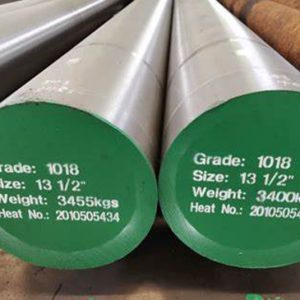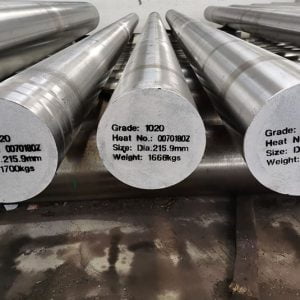Welcome to My Blog!
Before we dive into the content, I’d love for you to join me on my social media platforms where I share more insights, engage with the community, and post updates. Here’s how you can connect with me:
Facebook:https://www.facebook.com/profile.php?id=100087990137347
LinkedIn:https://www.linkedin.com/company/89825762/admin/dashboard/
YouTube:www.youtube.com/@carbonsteelsupply-kj9lw
TikTok:www.tiktok.com/@carbonsteelsupply
Now, let’s get started on our journey together. I hope you find the content here insightful, engaging, and valuable.
Introdução

What is AISI 1018 Carbon Steel?
AISI 1018 carbon steel is a low-carbon steel alloy that contains approximately 0.18% carbon content. This steel is part of the AISI (American Iron and Steel Institute) classification system, which categorizes steel based on its chemical composition and mechanical properties. AISI 1018 is recognized for its excellent weldability, machinability, and ability to withstand moderate stresses, making it suitable for various engineering applications.
Key Properties of AISI 1018 Carbon Steel
AISI 1018 carbon steel possesses several noteworthy properties that make it a popular choice among engineers and fabricators. These properties include:
- Composição química: AISI 1018 primarily consists of carbon (0.15-0.20%), manganese (0.60-0.90%), phosphorus (max 0.04%), and sulfur (max 0.05%).
- Tensile Strength: The tensile strength of AISI 1018 typically ranges from 440 to 580 MPa (63,000 to 84,000 psi).
- Yield Strength: The yield strength usually falls between 370 and 450 MPa (54,000 to 65,000 psi).
- Hardness: AISI 1018 can achieve a hardness rating of 119-145 HB (Brinell hardness).
- Maquinabilidade: This steel exhibits good machinability, allowing for easy shaping and fabrication.
Understanding these properties helps engineers select AISI 1018 for specific applications that require strength, toughness, and ease of processing.
Applications of AISI 1018 Carbon Steel
Common Uses of AISI 1018 Carbon Steel
AISI 1018 carbon steel is utilized in a wide array of applications across various industries. Some of the most common uses include:
Machinery Components: Due to its strength and machinability, AISI 1018 is often used to manufacture gears, shafts, and other machine parts.
Automotive Parts: This steel grade is frequently employed in the production of automotive components like brackets, frames, and chassis.
Construction: AISI 1018 is utilized in structural applications, including beams and columns, due to its favorable mechanical properties.
Welding and Fabrication: AISI 1018 is ideal for welding, making it a popular choice for fabricated structures and components.
Fasteners: It is commonly used for bolts, nuts, and screws because of its high strength and ductility.
Industries That Use AISI 1018 Carbon Steel
AISI 1018 carbon steel finds application in various industries, including:
Manufacturing: Widely used for producing industrial machinery and components.
Automotive: Essential for creating parts that require durability and reliability.
Construction: Used in structural applications due to its strength and versatility.
Aeroespacial: Suitable for certain applications where weight and strength are crucial.
Advantages of AISI 1018 Carbon Steel
Why Choose AISI 1018 Carbon Steel?
AISI 1018 carbon steel offers several advantages, making it a preferred choice among engineers and manufacturers:
- Cost-Effectiveness: AISI 1018 is relatively inexpensive compared to higher carbon or alloy steels, making it a cost-effective choice for various applications.
- Soldabilidade: Its low carbon content allows for easy welding without the risk of cracking.
- Maquinabilidade: AISI 1018 can be easily machined, allowing for complex shapes and designs to be created with precision.
- Versatility: Its wide range of applications makes it suitable for many industries, including automotive, construction, and manufacturing.
- Strength and Durability: With good tensile and yield strength, AISI 1018 is durable and can withstand moderate stresses.
Limitations of AISI 1018 Carbon Steel
Considerations When Using AISI 1018 Carbon Steel
While AISI 1018 carbon steel has numerous benefits, it also comes with some limitations that engineers should be aware of:
- Low Corrosion Resistance: AISI 1018 lacks the corrosion resistance of stainless steels, making it less suitable for applications exposed to harsh environments without protective coatings.
- Not Suitable for High-Temperature Applications: Its performance may deteriorate under high temperatures, limiting its use in specific high-heat applications.
- Limited Hardness: While AISI 1018 can be hardened, it does not achieve the hardness levels of higher carbon steels or alloy steels, which may be required for certain applications.
Comparison of AISI 1018 Carbon Steel with Other Steel Grades
AISI 1018 vs. AISI 4140: A Comparative Overview
To provide further clarity on AISI 1018 carbon steel, it is beneficial to compare it with other common steel grades, such as AISI 4140. Below is a table that summarizes the key differences between AISI 1018 and AISI 4140.
| Property | AISI 1018 Carbon Steel | AISI 4140 Steel |
|---|---|---|
| Carbon Content | 0.15-0.20% | 0.38-0.43% |
| Tensile Strength | 440-580 MPa (63,000-84,000 psi) | 655-860 MPa (95,000-125,000 psi) |
| Yield Strength | 370-450 MPa (54,000-65,000 psi) | 415-580 MPa (60,000-84,000 psi) |
| Hardness | 119-145 HB | 241-302 HB |
| Applications | Machinery, automotive, construction | Gears, axles, heavy machinery |
| Soldabilidade | Excellent | Good |
| Maquinabilidade | Good | Moderate |
From the comparison, it is evident that AISI 4140 offers higher strength and hardness levels than AISI 1018, making it suitable for more demanding applications. However, AISI 1018 remains a favored choice for applications requiring good weldability and machinability at a lower cost.
Fabrication and Machining of AISI 1018 Carbon Steel

Techniques for Working with AISI 1018
Fabricating and machining AISI 1018 carbon steel is relatively straightforward due to its favorable properties. Here are some common techniques used:
- Cutting: AISI 1018 can be easily cut using standard methods such as sawing, shearing, or laser cutting.
- Machining: This steel exhibits good machinability and can be machined using conventional methods, including turning, milling, and drilling.
- Welding: Due to its low carbon content, AISI 1018 can be welded using various techniques, including MIG, TIG, and stick welding. Preheating may be required for thicker sections.
- Heat Treatment: AISI 1018 can be heat-treated to improve its hardness and strength. Processes like quenching and tempering can enhance its mechanical properties.
- Surface Treatments: Coatings or surface treatments can be applied to enhance corrosion resistance, as AISI 1018 is susceptible to rusting.
Common Welding Techniques for AISI 1018
AISI 1018 carbon steel is known for its excellent weldability, which makes it a popular choice for various welding applications. Some common welding techniques include:
- MIG Welding: Metal Inert Gas (MIG) welding is commonly used for welding AISI 1018 due to its ease of use and efficiency.
- TIG Welding: Tungsten Inert Gas (TIG) welding provides high-quality welds, making it suitable for critical applications.
- Stick Welding: Shielded Metal Arc Welding (SMAW) can also be employed, particularly for thicker materials.
Conclusão
AISI 1018 carbon steel is a versatile and cost-effective material widely used in various engineering applications. With its excellent weldability, machinability, and moderate strength, it serves as an ideal choice for parts requiring durability and reliability. Engineers can confidently utilize AISI 1018 for manufacturing machinery components, automotive parts, and structural elements.
However, it is essential to consider its limitations, such as low corrosion resistance and limited hardness. By understanding the properties and characteristics of AISI 1018 carbon steel, engineers can make informed decisions that enhance the efficiency and performance of their projects.
FAQ
What is the carbon content of AISI 1018?
AISI 1018 carbon steel contains approximately 0.15% to 0.20% carbon content, making it a low-carbon steel.
Is AISI 1018 weldable?
Yes, AISI 1018 exhibits excellent weldability, making it suitable for various welding techniques, including MIG and TIG welding.
What industries commonly use AISI 1018?
AISI 1018 is widely used in the manufacturing, automotive, construction, and aerospace industries for various applications.
How does AISI 1018 compare to AISI 4140?
While AISI 1018 is a low-carbon steel with good machinability and weldability, AISI 4140 is an alloy steel with higher strength and hardness, suitable for more demanding applications.
Can AISI 1018 be heat-treated?
Yes, AISI 1018 can be heat-treated to improve its hardness and strength through processes like quenching and tempering.





